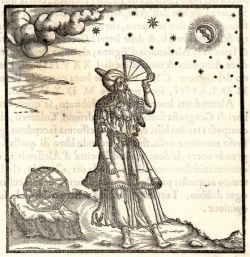Difference between revisions of "Lunar Calendar and Solar Dates"
(Created page with "thumb|250px| <poem> A 13-month Lunar Calendar with Solar Dates by Karl Palmen (2006) I have found a relatively simple way of [adding] a solar date t...") |
|||
| Line 1: | Line 1: | ||
[[File:Astrologers.jpg|thumb|250px|]] | [[File:Astrologers.jpg|thumb|250px|]] | ||
<poem> | <poem> | ||
| − | A 13-month Lunar Calendar with Solar Dates | + | A 13-month {{Wiki|Lunar Calendar}} with Solar Dates |
by Karl Palmen (2006) | by Karl Palmen (2006) | ||
| − | I have found a relatively simple way of [adding] a solar date to a date of a 13-month lunar calendar and then found a simple way using this solar date system to regulate the 13-month lunar calendar. | + | I have found a relatively simple way of [adding] a {{Wiki|solar}} date to a date of a 13-month {{Wiki|lunar calendar}} and then found a simple way using this {{Wiki|solar}} date system to regulate the 13-month {{Wiki|lunar calendar}}. |
| − | The Lunar Calendar in The Invisible Landscape suggests a lunar calendar where each lunar year has 13 lunar months. The mean year would be just under 384 days. | + | The {{Wiki|Lunar Calendar}} in The {{Wiki|Invisible}} Landscape suggests a {{Wiki|lunar calendar}} where each [[lunar]] year has 13 [[lunar months]]. The mean year would be just under 384 days. |
| − | I found that with such a calendar it would be quite easy to add a solar date to each such lunar calendar date to indicate the time of year. The solar dates belong to solar years and solar months defined thus: | + | I found that with such a [[calendar]] it would be quite easy to add a {{Wiki|solar}} date to each such {{Wiki|lunar calendar}} date to indicate the time of year. The {{Wiki|solar}} dates belong to {{Wiki|solar}} years and {{Wiki|solar}} months defined thus: |
| − | The solar year has 12 solar months each with 31 solar dates. | + | The {{Wiki|solar year}} has 12 {{Wiki|solar}} months each with 31 {{Wiki|solar}} dates. |
| − | A solar date is skipped at the end of each lunar month of only 29 days. | + | A {{Wiki|solar}} date is skipped at the end of each [[lunar month]] of only 29 days. |
| − | In addition, a solar date is skipped at the end of each lunar year. | + | In addition, a {{Wiki|solar}} date is skipped at the end of each [[lunar]] year. |
| − | Lunar year 1 begins close to a vernal equinox and its first day has the first date of a solar year. | + | [[Lunar]] year 1 begins close to a {{Wiki|vernal equinox}} and its first day has the first date of a {{Wiki|solar year}}. |
[[File:472.jpg|thumb|250px|]] | [[File:472.jpg|thumb|250px|]] | ||
| − | This provides a unique solar date for each date of the lunar calendar that does not depend of the number of days elapsed from the start of year 0. | + | This provides a unique {{Wiki|solar}} date for each date of the {{Wiki|lunar calendar}} that does not depend of the number of days elapsed from the start of year 0. |
| − | It is not necessary to count the solar years, to find the solar date. | + | It is not necessary to count the {{Wiki|solar}} years, to find the {{Wiki|solar}} date. |
| − | Each lunar month has 30 solar dates including any skipped dates. So each lunar year has 391 solar dates including the date skipped at the end of the lunar year. Also each solar year has 372 solar dates. Consequently, 372 lunar years equal 391 solar years. | + | Each [[lunar month]] has 30 {{Wiki|solar}} dates [[including]] any skipped dates. So each [[lunar]] year has 391 {{Wiki|solar}} dates [[including]] the date skipped at the end of the [[lunar]] year. Also each {{Wiki|solar year}} has 372 {{Wiki|solar}} dates. Consequently, 372 [[lunar]] years {{Wiki|equal}} 391 {{Wiki|solar}} years. |
| − | The solar dates (mm-dd) of the first days of the lunar months in the first ten lunar years: | + | The {{Wiki|solar}} dates (mm-dd) of the first days of the [[lunar months]] in the first ten [[lunar]] years: |
[[File:File 0.jpg|thumb|250px|]] | [[File:File 0.jpg|thumb|250px|]] | ||
Mth Yr 1 2 3 4 5 6 7 8 9 10 | Mth Yr 1 2 3 4 5 6 7 8 9 10 | ||
| Line 38: | Line 38: | ||
13 12-20 01-08 01-27 02-15 03-03 03-22 04-10 04-29 05-17 06-05 | 13 12-20 01-08 01-27 02-15 03-03 03-22 04-10 04-29 05-17 06-05 | ||
| − | The solar days of the lunar new years for the first 32 lunar years: | + | The {{Wiki|solar}} days of the [[lunar]] new years for the first 32 [[lunar]] years: |
[[File:IPbZW.jpg|thumb|250px|]] | [[File:IPbZW.jpg|thumb|250px|]] | ||
01: 01-01 11: 07-05 21: 01-09 31: 07-13 | 01: 01-01 11: 07-05 21: 01-09 31: 07-13 | ||
| Line 51: | Line 51: | ||
10: 06-17 20: 12-21 30: 06-25 | 10: 06-17 20: 12-21 30: 06-25 | ||
| − | and the date of the solar month of the new lunar year repeats every 31 lunar years with 32 solar years and 7 solar months every 31 lunar years. | + | and the date of the {{Wiki|solar}} month of the new [[lunar]] year repeats every 31 [[lunar]] years with 32 {{Wiki|solar}} years and 7 {{Wiki|solar}} months every 31 [[lunar]] years. |
[[File:Im45es.jpg|thumb|250px|]] | [[File:Im45es.jpg|thumb|250px|]] | ||
| − | 1 lunar year = 1 solar year and 19 solar dates. | + | 1 [[lunar]] year = 1 {{Wiki|solar year}} and 19 {{Wiki|solar}} dates. |
| − | 5 lunar years = 5 solar years 3 solar months and 2 solar dates. | + | 5 [[lunar]] years = 5 {{Wiki|solar}} years 3 {{Wiki|solar}} months and 2 {{Wiki|solar}} dates. |
| − | 10 lunar years = 10 solar years 6 solar months and 4 solar dates. | + | 10 [[lunar]] years = 10 {{Wiki|solar}} years 6 {{Wiki|solar}} months and 4 {{Wiki|solar}} dates. |
| − | 18 lunar years = 18 solar years 11 solar months and 1 solar date. | + | 18 [[lunar]] years = 18 {{Wiki|solar}} years 11 {{Wiki|solar}} months and 1 {{Wiki|solar}} date. |
| − | 31 lunar years = 32 solar years and 7 solar months. | + | 31 [[lunar]] years = 32 {{Wiki|solar}} years and 7 {{Wiki|solar}} months. |
| − | 62 lunar years = 65 solar years and 2 solar months. | + | 62 [[lunar]] years = 65 {{Wiki|solar}} years and 2 {{Wiki|solar}} months. |
| − | 93 lunar years = 97 solar years and 9 solar months. | + | 93 [[lunar]] years = 97 {{Wiki|solar}} years and 9 {{Wiki|solar}} months. |
| − | 124 lunar years = 130 solar years and 4 solar months. | + | 124 [[lunar]] years = 130 {{Wiki|solar}} years and 4 {{Wiki|solar}} months. |
| − | 186 lunar years = 195 solar years and 6 solar months. | + | 186 [[lunar]] years = 195 {{Wiki|solar}} years and 6 {{Wiki|solar}} months. |
| − | 372 lunar years = 391 solar years. | + | 372 [[lunar]] years = 391 {{Wiki|solar}} years. |
[[File:Mantras145.jpg|thumb|250px|]] | [[File:Mantras145.jpg|thumb|250px|]] | ||
| − | Also 18 lunar years and a lunar month (235 lunar months) equals 19 solar years, if 18 lunar years end within this period, else as in about 1 in 13 cases there are 19 lunar years ending in the period, it is 19 solar years and 1 solar date. | + | Also 18 [[lunar]] years and a [[lunar month]] (235 [[lunar months]]) equals 19 {{Wiki|solar}} years, if 18 [[lunar]] years end within this period, else as in about 1 in 13 cases there are 19 [[lunar]] years ending in the period, it is 19 {{Wiki|solar}} years and 1 {{Wiki|solar}} date. |
| − | Palmen-McKenna Calendar | + | Palmen-McKenna [[Calendar]] |
| − | The rules so far defined can be applied to any lunar calendar that has 13 months in a lunar year. Such a lunar calendar can be made accurate by having all years with 384 days, except just over one in ten years with 383 days (mean year about 383.38767 days). I found that the solar date provides a simple rule for determining whether a given lunar year is shortened to 383 days | + | The {{Wiki|rules}} so far defined can be applied to any {{Wiki|lunar calendar}} that has 13 months in a [[lunar]] year. Such a {{Wiki|lunar calendar}} can be made accurate by having all years with 384 days, except just over one in ten years with 383 days (mean year about 383.38767 days). I found that the {{Wiki|solar}} date provides a simple {{Wiki|rule}} for determining whether a given [[lunar]] year is shortened to 383 days |
| − | The resulting calendar is called the Palmen-McKenna Calendar: McKenna for the 13-month Calendar of The Lunar Calendar in The Invisible Landscape and Palmen because I invented these rules. | + | The resulting [[calendar]] is called the Palmen-McKenna [[Calendar]]: McKenna for the 13-month [[Calendar]] of The {{Wiki|Lunar Calendar}} in The {{Wiki|Invisible}} Landscape and Palmen because I invented these {{Wiki|rules}}. |
| − | Given that each lunar year has 13 months and a solar date is defined for each lunar date as already described, the year and months in the Palmen-McKenna Calendar are defined thus: | + | Given that each [[lunar]] year has 13 months and a {{Wiki|solar}} date is defined for each [[lunar]] date as already described, the year and months in the Palmen-McKenna [[Calendar]] are defined thus: |
[[File:Ology-2010-01.jpg|thumb|250px|]] | [[File:Ology-2010-01.jpg|thumb|250px|]] | ||
| − | A standard lunar year has odd-number months with 30 days and even-number months with 29 days (384 days total). | + | A standard [[lunar]] year has odd-number months with 30 days and even-number months with 29 days (384 days total). |
| − | A short lunar year is the same as a standard lunar year, except that the last (13th) month has only 29 days (383 days total). | + | A short [[lunar]] year is the same as a standard [[lunar]] year, except that the last (13th) month has only 29 days (383 days total). |
| − | A lunar year is short if it has two occurrences of either of: | + | A [[lunar]] year is short if it has two occurrences of either of: |
| − | Solar date Month 1 Date 1 (new solar year) or | + | Solar date Month 1 Date 1 (new {{Wiki|solar year}}) or |
| − | Solar date Month 7 Date 1 (half solar year) | + | Solar date Month 7 Date 1 (half {{Wiki|solar year}}) |
| − | Every skipped solar date shall be considered to belong to the same lunar year as the preceding day, when applying the preceding rule. | + | Every skipped {{Wiki|solar}} date shall be considered to belong to the same [[lunar]] year as the preceding day, when applying the preceding {{Wiki|rule}}. |
| − | Each lunar year is equal to one solar year and 19 solar dates (including skipped dates). Therefore, a lunar year is short if and only if one of its first 19 days has a solar date of either Month 1 Date 1 or Month 7 Date 1. Furthermore a lunar year y is short if and only if | + | Each [[lunar]] year is {{Wiki|equal}} to one {{Wiki|solar year}} and 19 {{Wiki|solar}} dates ([[including]] skipped dates). Therefore, a [[lunar]] year is short if and only if one of its first 19 days has a {{Wiki|solar}} date of either Month 1 Date 1 or Month 7 Date 1. Furthermore a [[lunar]] year y is short if and only if |
(19*y-1) mod 186 < 19 | (19*y-1) mod 186 < 19 | ||
Latest revision as of 02:47, 26 February 2016
A 13-month Lunar Calendar with Solar Dates
by Karl Palmen (2006)
I have found a relatively simple way of [adding] a solar date to a date of a 13-month lunar calendar and then found a simple way using this solar date system to regulate the 13-month lunar calendar.
The Lunar Calendar in The Invisible Landscape suggests a lunar calendar where each lunar year has 13 lunar months. The mean year would be just under 384 days.
I found that with such a calendar it would be quite easy to add a solar date to each such lunar calendar date to indicate the time of year. The solar dates belong to solar years and solar months defined thus:
The solar year has 12 solar months each with 31 solar dates.
A solar date is skipped at the end of each lunar month of only 29 days.
In addition, a solar date is skipped at the end of each lunar year.
Lunar year 1 begins close to a vernal equinox and its first day has the first date of a solar year.
This provides a unique solar date for each date of the lunar calendar that does not depend of the number of days elapsed from the start of year 0.
It is not necessary to count the solar years, to find the solar date.
Each lunar month has 30 solar dates including any skipped dates. So each lunar year has 391 solar dates including the date skipped at the end of the lunar year. Also each solar year has 372 solar dates. Consequently, 372 lunar years equal 391 solar years.
The solar dates (mm-dd) of the first days of the lunar months in the first ten lunar years:
Mth Yr 1 2 3 4 5 6 7 8 9 10
01 01-01 01-20 02-08 02-27 03-15 04-03 04-22 05-10 05-29 06-17
02 01-31 02-19 03-07 03-26 04-14 05-02 05-21 06-09 06-28 07-16
03 02-30 03-18 04-06 04-25 05-13 06-01 06-20 07-08 07-27 08-15
04 03-29 04-17 05-05 05-24 06-12 06-31 07-19 08-07 08-26 09-14
05 04-28 05-16 06-04 06-23 07-11 07-30 08-18 09-06 09-25 10-13
06 05-27 06-15 07-03 07-22 08-10 08-29 09-17 10-05 10-24 11-12
07 06-26 07-14 08-02 08-21 09-09 09-28 10-16 11-04 11-23 12-11
08 07-25 08-13 09-01 09-20 10-08 10-27 11-15 12-03 12-22 01-10
09 08-24 09-12 09-31 10-19 11-07 11-26 12-14 01-02 01-21 02-09
10 09-23 10-11 10-30 11-18 12-06 12-25 01-13 02-01 02-20 03-08
11 10-22 11-10 11-29 12-17 01-05 01-24 02-12 02-31 03-19 04-07
12 11-21 12-09 12-28 01-16 02-04 02-23 03-11 03-30 04-18 05-06
13 12-20 01-08 01-27 02-15 03-03 03-22 04-10 04-29 05-17 06-05
The solar days of the lunar new years for the first 32 lunar years:
01: 01-01 11: 07-05 21: 01-09 31: 07-13
02: 01-20 12: 07-24 22: 01-28 32: 08-01
03: 02-08 13: 08-12 23: 02-16
04: 02-27 14: 08-31 24: 03-04
05: 03-15 15: 09-19 25: 03-23
06: 04-03 16: 10-07 26: 04-11
07: 04-22 17: 10-26 27: 04-30
08: 05-10 18: 11-14 28: 05-18
09: 05-29 19: 12-02 29: 06-06
10: 06-17 20: 12-21 30: 06-25
and the date of the solar month of the new lunar year repeats every 31 lunar years with 32 solar years and 7 solar months every 31 lunar years.
1 lunar year = 1 solar year and 19 solar dates.
5 lunar years = 5 solar years 3 solar months and 2 solar dates.
10 lunar years = 10 solar years 6 solar months and 4 solar dates.
18 lunar years = 18 solar years 11 solar months and 1 solar date.
31 lunar years = 32 solar years and 7 solar months.
62 lunar years = 65 solar years and 2 solar months.
93 lunar years = 97 solar years and 9 solar months.
124 lunar years = 130 solar years and 4 solar months.
186 lunar years = 195 solar years and 6 solar months.
372 lunar years = 391 solar years.
Also 18 lunar years and a lunar month (235 lunar months) equals 19 solar years, if 18 lunar years end within this period, else as in about 1 in 13 cases there are 19 lunar years ending in the period, it is 19 solar years and 1 solar date.
Palmen-McKenna Calendar
The rules so far defined can be applied to any lunar calendar that has 13 months in a lunar year. Such a lunar calendar can be made accurate by having all years with 384 days, except just over one in ten years with 383 days (mean year about 383.38767 days). I found that the solar date provides a simple rule for determining whether a given lunar year is shortened to 383 days
The resulting calendar is called the Palmen-McKenna Calendar: McKenna for the 13-month Calendar of The Lunar Calendar in The Invisible Landscape and Palmen because I invented these rules.
Given that each lunar year has 13 months and a solar date is defined for each lunar date as already described, the year and months in the Palmen-McKenna Calendar are defined thus:
A standard lunar year has odd-number months with 30 days and even-number months with 29 days (384 days total).
A short lunar year is the same as a standard lunar year, except that the last (13th) month has only 29 days (383 days total).
A lunar year is short if it has two occurrences of either of:
Solar date Month 1 Date 1 (new solar year) or
Solar date Month 7 Date 1 (half solar year)
Every skipped solar date shall be considered to belong to the same lunar year as the preceding day, when applying the preceding rule.
Each lunar year is equal to one solar year and 19 solar dates (including skipped dates). Therefore, a lunar year is short if and only if one of its first 19 days has a solar date of either Month 1 Date 1 or Month 7 Date 1. Furthermore a lunar year y is short if and only if
(19*y-1) mod 186 < 19
This leads to the short years being:
1, 10, 20, 30, 40,
49, 59, 69, 79, 89,
98, 108, 118, 128, 138,
147, 157, 167, 177, 187
and so on every 186 years
A complete cycle of 372 lunar years (twice 186 lunar years) has 372*384-38 = 142810 days. It also has 403 lunar years of 12 lunar months (13*372 = 4836 = 12*403). It is an eclipse cycle called the Grattan-Guinness cycle. See Robert Van Gent’s Catalogue of Eclipse Cycles. It has 391 solar years and also 824 eclipse seasons. It also equals 403 lunar years of 12 lunar months each.
The mean lunar year is 142810/372 = 383.897849… days and so
the mean lunar month is 142810/(372*13) = 29.5306038… days.
The mean solar year is 142810/391 = 365.242967… days.
The solar days of the lunar new years for the first 50 lunar years:
01: 01-01* 11: 07-05 21: 01-09 31: 07-13 41: 01-17
02: 01-20 12: 07-24 22: 01-28 32: 08-01 42: 02-05
03: 02-08 13: 08-12 23: 02-16 33: 08-20 43: 02-24
04: 02-27 14: 08-31 24: 03-04 34: 09-08 44: 03-12
05: 03-15 15: 09-19 25: 03-23 35: 09-27 45: 03-31
06: 04-03 16: 10-07 26: 04-11 36: 10-15 46: 04-19
07: 04-22 17: 10-26 27: 04-30 37: 11-03 47: 05-07
08: 05-10 18: 11-14 28: 05-18 38: 11-22 48: 05-26
09: 05-29 19: 12-02 29: 06-06 39: 12-10 49: 06-14*
10: 06-17* 20: 12-21* 30: 06-25* 40: 12-29* 50: 07-02
Years with new year solar dates marked * are short lunar years.
Jubilees
When looking at the short lunar years, I came up with the idea of defining a Jubilee as a period of lunar years for which,
the first year is a short lunar year that is 9 years after the previous short lunar year (instead of the usual 10 years),
all short lunar years within a Jubilee have numbers ending in the same digit and
it ends just before the next jubilee.
The 186-year cycle then consists of a 39-year jubilee and three 49-year jubilees. The 39-year Jubilee begins at year 10 of the 186-year cycle.
The mean length of a Jubilee is 391/8 = 48.875 solar years (48 years 10 months 15.5 dates). It is about half a lunar month longer than a Qumran jubilee of 49 years of 364 days and about 604 lunations.
Also,
39 lunar years = 41 solar years less 3 solar dates (a short jubilee)
49 lunar years = 51 solar years 6 solar months and 1 solar date (a full jubilee)








